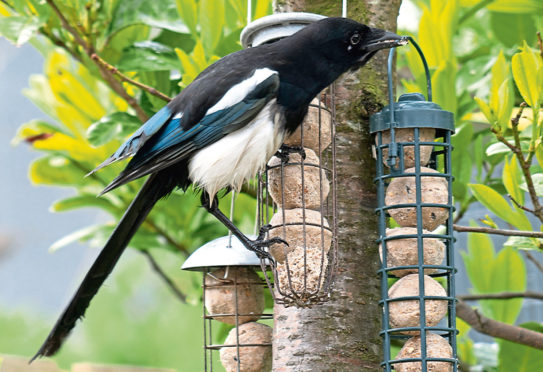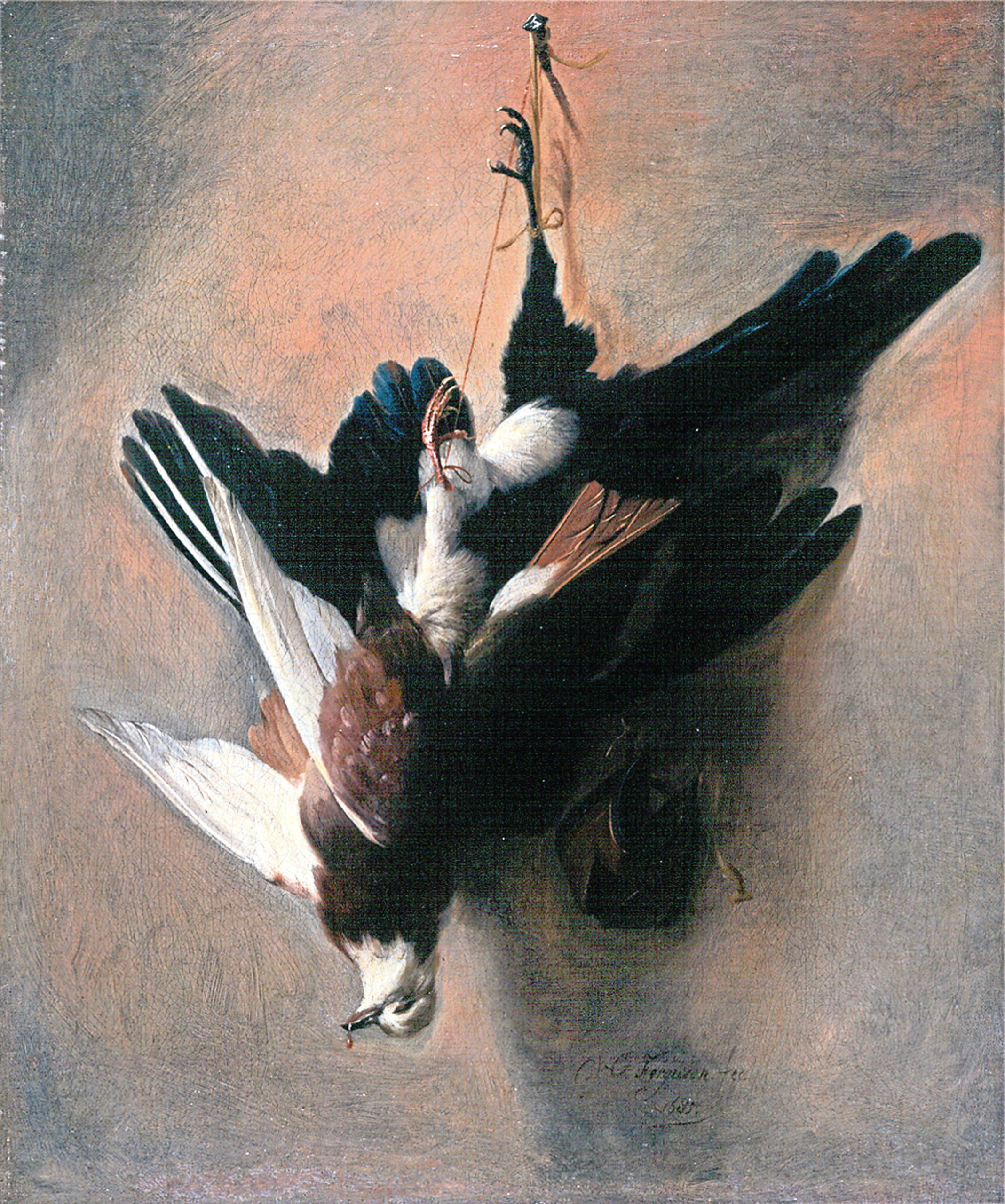This painting by William Gouw Ferguson (about 1632–1695) is one of the most enigmatic paintings in the collection of Aberdeen Art Gallery & Museums. It shows the fruits of a hawking expedition – a dead pigeon and magpie suspended from a nail along with a hawk’s hood.
Despite the cool clarity of the picture’s tone, there is a sombre and mournful quality in this work. The still life with dead game is often seen as a symbol of mortality. This is to remind us of death that waits for everyone.
In the pecking order, a bird of prey, such as an eagle or a hawk, belongs to the category of noble birds. They are used to hunt feathered game – such as magpies and pigeons – from a great height, signifying a higher power. The hawk’s hood on the wall, therefore, represents a clear hierarchy which also exists in the animal kingdom.
There is an old superstition that encountering a single magpie is regarded as a sign of bad luck. It reminds you of the old nursery rhyme: “One for sorrow, two for joy”. It may explain why only half of the body of the magpie is depicted.
Famed for their habit of gathering oddments, magpies were sometimes called haggess in the 16th Century – sometimes haggister. According to the British lexicographer John Ayto, there is a close affinity between the words haggis, a typically Scottish dish with “a miscellaneous collection of edible odds and ends”, and the 16th Century term haggess, derived from Old French agace, meaning “magpie”.
Doves and pigeons are basically interchangeable names for the same bird. In Christian iconography, the dove is a symbol of the Holy Spirit and purity. What seems interesting is unlike pigeons, magpies have been vilified since the dawn of Christianity.
There is a legend that when Jesus was crucified, two birds came to perch on his cross. One was a pigeon, the other a magpie. The pigeon grieved for Jesus, but the magpie seemed indifferent. In Scottish folklore, the magpie was often called the “Devil’s bird” and was believed to have some of the Devil’s blood under its tongue.
By pairing the two birds – the pigeon, representing good and the magpie evil, one in the light and the other in the shadow – Ferguson’s painting can be seen as a powerful symbolic portrait of humanity in which good and evil are not necessarily in opposition and may exist simultaneously within all of us.
You will be able to see this painting in our new Exploring Art gallery, which looks at where artists get their inspiration.
Aberdeen Art Gallery & Museums:
- Aberdeen Art Gallery (reopening autumn 2019)
- Aberdeen Maritime Museum (open 7 days, admission free)
- The Tolbooth Museum (open 7 days, admission free)
- Aberdeen Treasure Hub Museum Centre
For visiting information go to www.aagm.co.uk
Keep up to date with all the latest news from Aberdeen Art Gallery & Museums by signing up to our e-newsletter at www.aagm.co.uk/mailinglist
Follow us on Facebook, Twitter and Instagram @AbdnArtMuseums

